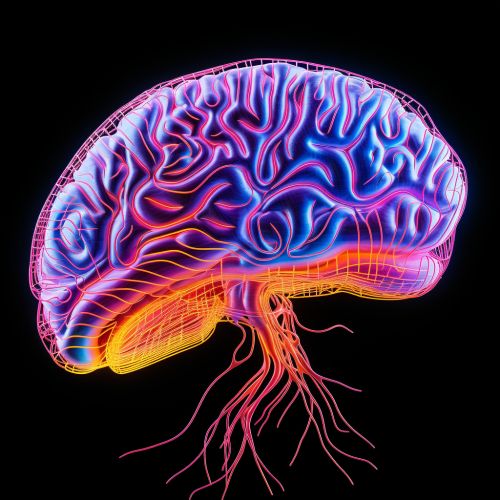Parietal lobes
Anatomy
The parietal lobes are one of the four main lobes of the brain, situated posterior to the frontal lobes and anterior to the occipital lobes. The parietal lobes are separated from the frontal lobes by the central sulcus, and from the occipital lobes by the parieto-occipital sulcus.


The parietal lobes can be divided into two functional regions. One involves sensation and perception and the other is concerned with integrating sensory input, primarily with the visual system. The first function integrates sensory information to form a single perception (cognition). The second function constructs a spatial coordinate system to represent the world around us. Individuals with damage to the parietal lobes show striking deficits, such as abnormalities in body image and spatial relations.
Functions
The parietal lobes play important roles in integrating sensory information from various parts of the body, understanding spatial orientation, recognition of objects and faces, and in the processing of language.
Sensory Integration
The primary sensory areas of the parietal lobes are involved in the processing of tactile and proprioceptive information. The somatosensory cortex, located in the postcentral gyrus, is the main sensory receptive area for the sense of touch. Similarly, the dorsal stream of the visual system, which is involved in spatial awareness and guidance of movements, ends in the posterior parietal cortex.
Spatial Orientation
The parietal lobes are also involved in spatial orientation, helping us to understand where we are in relation to our surroundings. This is particularly important for navigating through space, whether it's finding our way through a city or simply reaching out to grab a cup of coffee.
Object and Face Recognition
The parietal lobes are involved in object and face recognition. Damage to these areas can result in agnosia, a disorder characterized by the inability to recognize objects, faces, or shapes, despite having intact sensory function.
Language Processing
The dominant parietal lobe, which is the left side in about 95% of right-handed individuals and 70% of left-handed individuals, is also involved in language processing. The main areas involved in this are the supramarginal gyrus and the angular gyrus, both located in the parietal lobe. Damage to these areas can result in language deficits such as agraphia and dyslexia.
Clinical Significance
Damage to the parietal lobes can result in a number of neurological and cognitive deficits. These include sensory loss, spatial disorientation, neglect of body parts, difficulty with motor function, and language deficits.
Sensory Loss
Damage to the primary sensory areas of the parietal lobes can result in sensory loss, particularly in the contralateral side of the body. This can affect all modalities of sensation, including touch, temperature, pain, and proprioception.
Spatial Disorientation
Spatial disorientation, or the inability to navigate through space, is a common symptom of parietal lobe damage. This can manifest as difficulty in finding one's way in new or even familiar environments.
Neglect of Body Parts
Another common symptom of parietal lobe damage is neglect of body parts, particularly on the contralateral side of the body. This can manifest as a failure to use a limb, or even a denial of ownership of the limb.
Motor Function Difficulty
Difficulty with motor function, or apraxia, is also a common symptom of parietal lobe damage. This can manifest as difficulty in performing purposeful movements, despite having normal muscle strength.
Language Deficits
Language deficits, such as agraphia and dyslexia, can also occur as a result of damage to the parietal lobes. This can result in difficulty with writing and reading, respectively.
